How to Write a Check
A negotiable instrument that encompasses an unconditional order to the bank for paying a certain sum mentioned on it by the drawer to the bearer is termed as a check. It is an instrument in writing, addressed to a banker, signed by the person who has deposited money with the bank. There is a statutory obligation on the part of a banker to make payment only if,
- The check is drawn correctly.
- There is sufficient balance in the preferred account of the drawer.
- There is no legal restraint on the bank’s duty to pay.
Under section 6 of the Negotiable Instruments Act 1881:
A “check” is a bill of exchange payable to bearer, or demand can be drawn on an individual account with a banker.
Before the evolution of Checks, bills of exchange were being used by the 17th century. Initially, the checks were called “Drawn notes,” and these were handwritten. The pre-printed form of the check was first used in the bank of England. The first bank was “Commercial Bank of Scotland” that personalize its customer’s check by printing the name of the account holder in 1881.
There are three parties of check:
- Drawer: The person who orders the bank to pay and make the check.
- Drawee: The banker who is directed to pay to the financial institution or bank where the check can be presented for payment is called drawee.
- Payee: The person named in the check or who is authorized to obedient payment.
There are several types of checks:
- Order check: An order check refers to a check where the beneficiary of the check is specified named person or to his/her order by the proper endorsement on the back of the check is called order check.
- Bearer check: When the words “or bearer” mentioned on the check, which is not cancelled, and is payable to a person whosoever bears is called bearer check.
- Stale check: A check which is more than three months old is called a stale check. It cannot be paid.
- Ante-dated check: A check bearing a date prior to the actual date of signing the check or opening an account is called an ante-dated check.
- Post-Dated Check: A check bearing the future date in which money will not be payable by the bank before that day.
- Open check/Uncrossed check: It is a kind of check-in in which cash is only payable at the bank counter or transferable in nature.
- Crossed check: A check which has been crossed by drawing to transverse parallel lines at the top left corner by the drawer at the time of issue or by the banker who receives the check for the collection.
- Blank check: On the blank check, the name of the payee is not mentioned, but it is only signed.
- Mutilated check: Mutilated check refers to a check which is torn into more than one piece.
- Cancelled check: A check which is cancelled due to any kind of mistake while writing it.
Once checks are deposited for collection, they are sent either in physical form to the clearinghouse or through CTS (Check Truncation System). In the case of CTS, its electronic image is used for collecting the payment is called a CTS check. The physical checks are marked – “Scanned for clearing” are kept at the branch for seven years and are called date wise vouchers, and afterward, the bank is not entertained any legal queries regarding the transactions.
A check is the most common approach to pay money to someone. Writing a check is a simple and essential skill that everyone should know. Writing a check seems to be such an easy task, but do you know that any single mistakes lead to significant consequences for you.
If you are not attentive while writing a check, it can be misused, and you may face monitory loss. In this tutorial, we will cover all the process which you should always know before writing a check.
Writing a Check:
Write the Date:
Open your preferred check book, and go to the top right corner of your check book. There will be a blank box above the “Date,” “Month,” and “Year.”

You should remember before entering a date that a check is a legal document, and the date you have written here should always be the specific day that you sign at the bottom of the check.
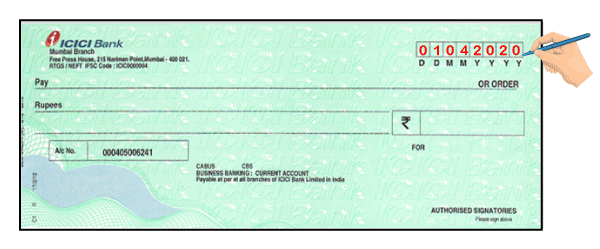
Write the Name of the Payee:
Once you enter the date on the check, you to write the “Payee name,” “Company name,” Or “Self” next to the line that says “Pay.” If it is an organization and you are not sure about its name, first, you need to ensure that information correctly before you enter the name of the particular organization on the check. You can also write “Cash” next to the pay option, but be attentive, because anyone can withdraw cash from your check.
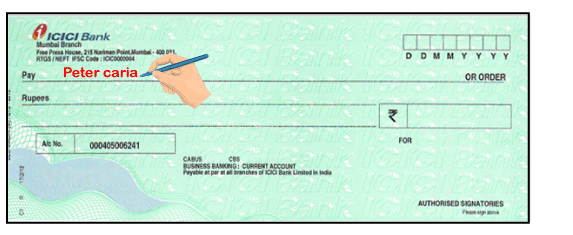
Ensure the following things while writing the name of the payee:
- Enter both First and Last name:
If you are writing a check for an individual, you need to enter both their first and last name. Consider an example, you issue a check to “Peter Caria,” here, the first name of the payee is Peter, and the last name is Caria. - Don’t leave extra space between the Names:
Consider you issue a check to “Arpit Jain,” if you put more space between “Arpit” and “Jain,” it looks like “Arpit Jain.” So, one can add an additional word “a” after “Arpit,” and the name becomes “Arpita.” However, if you leave the exact small space between “Arpit” and “Sharma,” it is going to be a tough task for anyone to add another alphabet in between the name. - Write the full name of the organization:
If you write a check in favour of any organization, you need to write its name full name. Avoid the use of the acronym.
Enter the Amount in Digit Form:
After now, to the right corner of the rupees, you will find a box with rupees icon, you need to enter the exact amount in digit form. Make sure you are entering the amount in rupees only. If you write ten thousand rupees, write “10000/00” or “10000.00.”
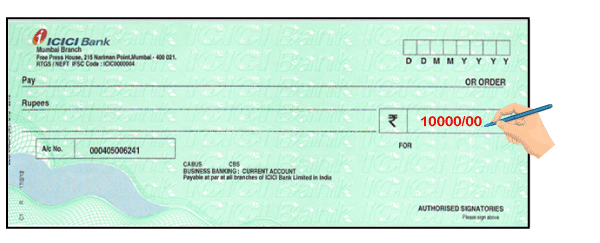
Don’t put space after the amount you entered “10000 ” must put decimal or hyphen after the last digit of your exact amount. If you put space after the last digit of your amount, one can add additional alphabet “000” after the amount “10000,” so the amount becomes “10000000.” So, you need to be careful.
Write the Amount in the Word form:
Enter the exact amount in the “word” form to right next to the Rupees. If you have written a check for “10000/00”, write “Ten thousand rupees only.”
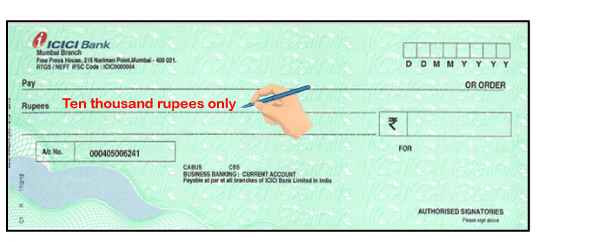
Sign the Check:
Go to the bottom right corner of the check, where you will see the option “AUTHORISED SIGNATORIES.” Where you need to sign at the space provided above the “AUTHORISED SIGNATORIES” option.
- Your signature must be in running latter.
- Your check is personally signed; otherwise it will be invalid.
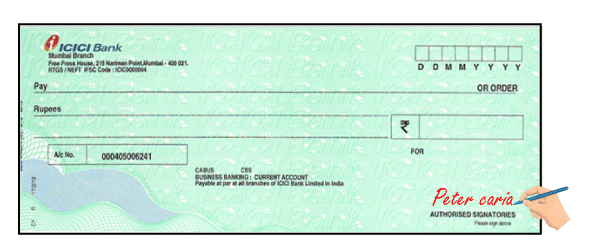
Enter the reason for paying the money:
This “For” part of the check is optional, and it can help the issuer of the check to write a note to yourself to remember for what reason he/she is spending money. You can enter “For Donation” if you are sending a donation check.

